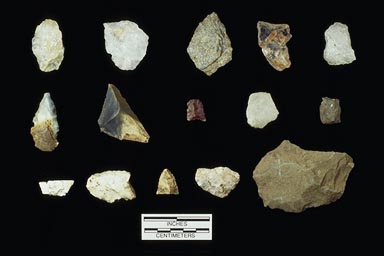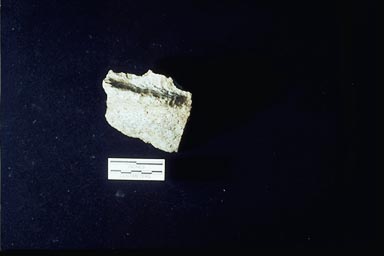Home Page
A VISUAL TOUR OF GEORGIA'S PREHISTORIC PAST:
INDIAN TECHNOLOGY FROM 9,500 B.C. to A.D. 1540
Page 2

These ground stone implements are from the Chase Site (Georgia International Horse Park) in Conyers, Georgia. They date to approximately 1,750 B.C. The example on the left was probably used to fell trees and conduct other types of woodworking activities. The two other specimens were likely used for digging. All three of these items were likely part of a composite tool, and were hafted (tied) to a large wooden handle.

Chips of stone were removed from larger "cores" to create "expedient" tools. These items were simply struck off the core with a harder cobble. The sharp edge was used to cut, scrape, or perforate wood, hide, or other media, and then the artifact was immediately discarded after use. This is in contrast to the formal tools depicted previously, which were fashioned into a desired shape, carried from site to site, and re-used many times. Formal tools like spear points, knives, and axes were often resharpened and reformed when dulled or damaged.

Between approximately 2,200 and 1,000 B.C., people in the Southeast manufacured large, heavy-duty bowls out of a very soft but durable material called soapstone. This easilly carved rock outcrops in several places throughout the Southeast. These, and other cooking-related soapstone items like cooking stones, became very important trade commodities. Control of that trade appears to have created powerful leadership positions, and hence soapstone was an intergral part of regional economic and political developments. The bowl fragment pictured here has a lug handle; these devices were often carved onto the sides of the bowl to facilitate handling. This artifact was recovered from Rockdale County, Georgia.
To Page 1 of the Visual Tour